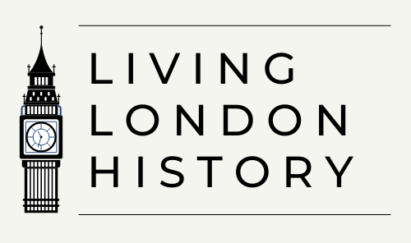On a quiet side-street, practically within the shadow of Westminster Abbey, you will find a little-known historical remnant.

The street in question is Little Sanctuary and the historical treasure: this old stone gateway.

It was once the entrance to one of London’s lost prisons called Tothill Fields Bridewell Prison. As the name suggests, it was located in what was once the marshy Tothill Fields area between Westminster Abbey and where Victoria station now is.

The House of Correction
Built in 1618, Tothill Fields Bridewell was intended as the Westminster equivalent of Bridewell Palace in the City. The City’s ‘Bridewell’ was originally a Tudor palace that became a ‘House of Correction’ and, later on, a notorious prison.
Tothill Fields was also, at first, a ‘House of Correction’; intended for the able bodied but lazy or ‘indolent’ poor.

It was also referred to as ‘Westminster Bridewell’ or ‘Westminster House of Correction’.
The prison was expanded in 1655 and in the early 1700’s started taking prisoners for incarceration. It soon morphed into a full-blown prison.
Notable prisoners include James Tilly Matthews (1770-1815), who is considered the first fully documented case of paranoid schizophrenia and John Trumbull (1746-1843), a famous painter of the American Revolution: imprisoned for treason.
Demolished in 1836, the old prison was moved to another site and the gateway is the only physical reminder we have left of it: isolated and forgotten.
Why was the doorway was saved from demolition? Your guess is as good as mine.
The Doorway
The stone doorway was put on its present site, around the back of the Supreme Court building (previously the Middlesex Guildhall), by the Greater London Council in 1969.

It does not actually lead anywhere, as you can see below.

The plaque above the doorway reads:
“Here are several Sorts of Work for the Poor of this Parish of St Margaret’s Westminster. As also the County, according to law. and for such as will beg and live idle in this City and Liberty of Westminster, Anno 1655.”

It is slightly harrowing to think about all those miserable souls that must have passed through this doorway.
The New Prison
In 1834 it was replaced by a much larger prison on a site slightly to the North, where Westminster Cathedral is today.

The new prison was designed by Robert Abraham in the shape of a 3 leaf clover and after 1850 was predominantly used for women and young men under the age of 17.
One of the ‘leaves’ of the clover was for the young men and the other two for the women.

It was actually considered more easy-going than many of the other prisons in London. The prison was run on a ‘silent/separate system’, so the prisoners were not allowed to talk to each other. The idea being that they were there to quietly reflect on their crimes. The main punishment was usually a restriction on their food for talking.
Whipping was the most severe of the punishments administered and between 1851-55 this was only given out twice.
Other features of the prison were that:
- They would be awoken by a gun fired at 6.25am.
- The prisoners’ day would mostly consist of work such as oakum picking (unravelling rope for use in ships).
- The most common crime was pickpocketing (over 1/3 of prisoners) but other crimes included knocking on doors and running away and playing with a spinning top, which seems pretty harsh…
- Over half were recommittals (well above the 25% country-wide average).
- Click here for a great article on life inside the prison.

The end of Tothill Fields Prison
The prison shut in 1877 and was finally demolished in 1885. Part of the site is now occupied by Westminster Cathedral, with some of the foundations of the prison actually included in the foundations of the Cathedral.

The prisoners were moved to Millbank prison nearby: a prison with, unfortunately, a much worse reputation.
So, next time you are in Westminster, admiring the grand towering edifices of Westminster Palace or Westminster Abbey, take a moment to appreciate this rather more ignored little slice of London history.
Thank you for reading. More of London’s hidden gems below:
An Inspiring Community Campaign: The East London Waterworks Park
I have written a lot since starting this blog about many of the amazing green…
Celebrating 60 Years Of The London Ambulance Service
2025 marks the 60th anniversary of one of London’s most essential services: the London Ambulance…
What Are The Odd Red Pillars By Blackfriars Bridge?
If you have ever walked over Blackfriars Bridge you may well have spotted these odd…
Exploring The Beautiful And Fascinating Islands Of Guernsey
In late April this year I went on a trip to Guernsey in partnership with…






Thank you. I glad you took the trouble to do this history.
Do you mean in the shadow of Westminster Cathedral not the Abbey. As the Cathedral was built on the site of the prison?
I do mean the Abbey because the doorway is not at its original location. It was where the Cathedral is but is now by the Abbey. Many thanks, Jack